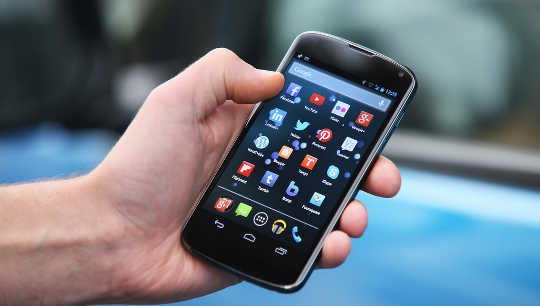
Apps drain 28.9 percent of smartphone battery power while the screen is off, according to the first large-scale study of smartphones in everyday use.
To address the problem, researchers have created a software tool that reduces the energy drain by about 16 percent.
Researchers studied the use of 2,000 Samsung Galaxy S3 and S4 phones served by 191 mobile operators in 61 countries. “This was the first large-scale study of smartphone energy drain ‘in the wild,’ or in everyday use by consumers,” says Y. Charlie Hu, a professor of electrical and computer engineering at Purdue.
Out of the 45.9 percent of daily battery drain where the screen is off, 28.9 percent is due to apps that frequently wake up and run in the background. Out of this 28.9 percent, researchers have shown how to save 15.7 percent with a new system called HUSH, which is available for free on GitHub.
“During screen-off, the phone hardware should enter the sleep state, draining close to zero power,” Hu says. “Apps wake the phone up periodically during screen-off to do useful things, but then afterward, they should let the phone go back to sleep. They are not letting the phone go back to sleep because of software bugs and, specifically, due to the incorrect use of Android power control application programming interfaces called wakelocks.”
Researchers presented their paper this week at the ACM MobiCom 2015 conference in Paris.
“We presented the first study a few years back showing wakelock bugs could cause significant energy drain,” Hu says. “But this is the first study showing that wakelock bugs appear prevalent on real users’ phones.”
The “in-the-wild” battery drain study was subject of a previous presentation that included data from the use of about 1,500 phones.
“Being able to reduce the total daily energy drain by about 16 percent is rather significant because you can extend the battery charge by one-sixth,” Hu says.
The key insight behind the proposed solution, HUSH, is that background activities of individual apps are not equally important to individual smartphone users. For example, frequent Facebook updates during screen-off may be useful to a user who checks Facebook feeds and reacts to notifications often, but they are much less useful to another user who rarely checks such updates.
The HUSH system dynamically identifies app background activities that are not useful to the user experience on a per-app basis and suppresses such background app activities during screen-off to reduce the battery drain.
When the phone is in screen-off, it also continues draining power for various legitimate maintenance purposes: for example, A WiFi beacon, when the phone’s WiFi system sends a periodic signal to the access point once every 200 milliseconds, and a “cellular paging” function, when the phone talks to the base station every 1.28 seconds to check for incoming calls or data.
In efforts to extend battery life, researchers will work to reduce energy drain from these legitimate functions as well as faulty apps.
“The big picture is that we want to double the battery life for smartphones,” Hu says. “This is going to be a non-trivial journey because much of the battery drain is caused by various apps when the screen is on and also legitimate maintenance functions.”
The research is ongoing, with implications for the 5G wireless network design.
The Intel 5G Research Program and the National Science Foundation have supported the work.
Source: Purdue University
Related Book:
at

Thanks for visiting InnerSelf.com, where there are 20,000+ life-altering articles promoting "New Attitudes and New Possibilities." All articles are translated into 30+ languages. Subscribe to InnerSelf Magazine, published weekly, and Marie T Russell's Daily Inspiration. InnerSelf Magazine has been published since 1985.

Thanks for visiting InnerSelf.com, where there are 20,000+ life-altering articles promoting "New Attitudes and New Possibilities." All articles are translated into 30+ languages. Subscribe to InnerSelf Magazine, published weekly, and Marie T Russell's Daily Inspiration. InnerSelf Magazine has been published since 1985.






















